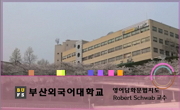This study compared the results of Lee Deok-bae (2014) and the present (2020) on the usage of ‘Gao’ or ‘Gaojabda’ between generations. After comparing the usage pattern of general public in the media with that of high school students and colle...
http://chineseinput.net/에서 pinyin(병음)방식으로 중국어를 변환할 수 있습니다.
변환된 중국어를 복사하여 사용하시면 됩니다.
- 中文 을 입력하시려면 zhongwen을 입력하시고 space를누르시면됩니다.
- 北京 을 입력하시려면 beijing을 입력하시고 space를 누르시면 됩니다.

‘가오잡다’의 세대 간 사용양상에 관한 사회언어학적 고찰 = A Study on the Use Patterns of ‘Gaojabda’ in the Intergenerational Society
한글로보기https://www.riss.kr/link?id=A107374854
- 저자
- 발행기관
- 학술지명
- 권호사항
-
발행연도
2021
-
작성언어
-
- 주제어
-
등재정보
KCI등재
-
자료형태
학술저널
- 발행기관 URL
-
수록면
73-87(15쪽)
-
KCI 피인용횟수
0
- 제공처
-
0
상세조회 -
0
다운로드
부가정보
다국어 초록 (Multilingual Abstract)
This study compared the results of Lee Deok-bae (2014) and the present (2020) on the usage of ‘Gao’ or ‘Gaojabda’ between generations. After comparing the usage pattern of general public in the media with that of high school students and college students, the time concept between generations and the ambiguous boundaries of semantic qualities that exist between time made a difference in the usage of language. The elaboration of metaphorical use of glorification, exaggeration and avoidance was progressing.
Comparing the frequency of use of ‘Gao’ or ‘Gaojabda’ with Lee Duk-bae (2014) and this study (2020), Lee Duk-bae (2014) has a response rate of 45% (23 respondents) on “sometimes/often used” and this study (2020) has 100% (51 respondents) on “have used it before”. The reason why the frequency of use of ‘Gaojabda’ among high school students and college students increased in 2020 compared to 2014 is that the acceptance of language use has increased as ‘Gao’ has been exposed more through media in the arts and cultural sector and by the social leaders.
Analysing the usage pattern of ‘Gaojabda’ in terms of time concept between generations, high school students use “gaojabda,” a term that means “pretend” and connotes a negative attitude toward the exaggerated behavior of others. College students in their twenties added meaning of ‘pretend to be strong’ in ‘pretend’ used by high school students, and started to use the meanings of ‘face, appearance, cool and Bonsae’, which are the dictionary definition of ‘Gao’. This finding suggests that two different semantic features coexist in the usage of ‘Gao’ among people in their twenties. People in their twenties use both exaggerated slang metaphors used by high school students and general metaphors such as glorification and avoidance of shame used by the general public. The meaning and usage patterns of ‘Gaojabda’ are different between generations, in other words in time concept, but it is found that 'Gaojabda' is used metaphorically by finding alternative expressions derived from its base meaning.
참고문헌 (Reference)
1 이덕배, "한국어에 잔존하는 일본어의 의미 변화에 관한 고찰 - 20·30대의 언어 인식을 중심으로 -" 한국일본어교육학회 (70) : 125-142, 2014
2 "한국경제매거진(2019.07.29.기사)"
3 최정희, "한국 대학생의 ‘간지나다’ 사용 양상에 관한 사회언어학적 고찰" 한국일본어교육학회 (83) : 73-90, 2018
4 "전자신문(2017.09.17.기사)"
5 임지룡, "인지언어학 기초" 한국문화사 49-, 2008
6 임지룡, "인지 의미론" 한국문화사 13-20, 2017
7 "영화진흥위원회 영화관입장권통합전산망"
8 왕한석, "언어와 사회 –의사소통의 민족지학 입문-" 한국문화사 231-264, 2009
9 이성하, "문법화의 이해" 한국문화사 219-226, 1998
10 노양진, "몸이 철학을 말하다" 서광사 234-236, 2013
1 이덕배, "한국어에 잔존하는 일본어의 의미 변화에 관한 고찰 - 20·30대의 언어 인식을 중심으로 -" 한국일본어교육학회 (70) : 125-142, 2014
2 "한국경제매거진(2019.07.29.기사)"
3 최정희, "한국 대학생의 ‘간지나다’ 사용 양상에 관한 사회언어학적 고찰" 한국일본어교육학회 (83) : 73-90, 2018
4 "전자신문(2017.09.17.기사)"
5 임지룡, "인지언어학 기초" 한국문화사 49-, 2008
6 임지룡, "인지 의미론" 한국문화사 13-20, 2017
7 "영화진흥위원회 영화관입장권통합전산망"
8 왕한석, "언어와 사회 –의사소통의 민족지학 입문-" 한국문화사 231-264, 2009
9 이성하, "문법화의 이해" 한국문화사 219-226, 1998
10 노양진, "몸이 철학을 말하다" 서광사 234-236, 2013
11 "국립국어원"
12 "광주드림(2020.06.22.기사)"
13 "강원도민일보(2019.12.26.기사)"
14 Lakoff, George, "The Invariance Hypothesis: Is abstract reason based on image schemas?" Walter de Gruyter 1 (1): 39-74, 1990
15 "KBSnews(2019.12.22.기사)"
16 "JTBCnews(2019.12.21.기사)"
동일학술지(권/호) 다른 논문
-
程度副詞化の事例研究 ― 「ばかに」「いやに」「やけに」を例にして ―
- 한국일본어교육학회
- 전자연 ( Jun Jayeon )
- 2021
- KCI등재
-
現代日本語と韓国語の動詞条件形の語彙化 - 視覚動詞「みる」「보다」の条件形の場合 -
- 한국일본어교육학회
- 하재필 ( Ha Jaephil )
- 2021
- KCI등재
-
- 한국일본어교육학회
- 강경하 ( Kang Gyungha )
- 2021
- KCI등재
-
『도사닛키(土佐日記)』와 『계축일기(癸丑日記)』의 주이상스(jouissance)
- 한국일본어교육학회
- 박윤호 ( Park¸ Yoonho )
- 2021
- KCI등재
분석정보
인용정보 인용지수 설명보기
학술지 이력
| 연월일 | 이력구분 | 이력상세 | 등재구분 |
|---|---|---|---|
| 2026 | 평가예정 | 재인증평가 신청대상 (재인증) | |
| 2020-01-01 | 평가 | 등재학술지 유지 (재인증) |  |
| 2017-01-01 | 평가 | 등재학술지 유지 (계속평가) |  |
| 2013-01-01 | 평가 | 등재 1차 FAIL (등재유지) |  |
| 2010-01-01 | 평가 | 등재학술지 유지 (등재유지) |  |
| 2009-02-19 | 학술지명변경 | 한글명 : 일어교육 -> 日本語敎育외국어명 : The Japanese Education Association Of Korea -> Journal of Japanese Language Education Association |  |
| 2009-02-19 | 학술지명변경 | 한글명 : 일어교육 -> 日本語敎育 |  |
| 2007-01-01 | 평가 | 등재학술지 선정 (등재후보2차) |  |
| 2006-01-01 | 평가 | 등재후보 1차 PASS (등재후보1차) |  |
| 2004-01-01 | 평가 | 등재후보학술지 선정 (신규평가) |  |
학술지 인용정보
| 기준연도 | WOS-KCI 통합IF(2년) | KCIF(2년) | KCIF(3년) |
|---|---|---|---|
| 2016 | 0.36 | 0.36 | 0.3 |
| KCIF(4년) | KCIF(5년) | 중심성지수(3년) | 즉시성지수 |
| 0.27 | 0.25 | 0.589 | 0.16 |





 KCI
KCI KISS
KISS




